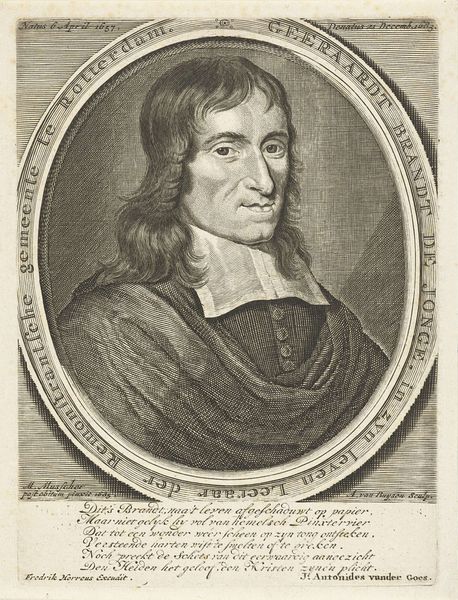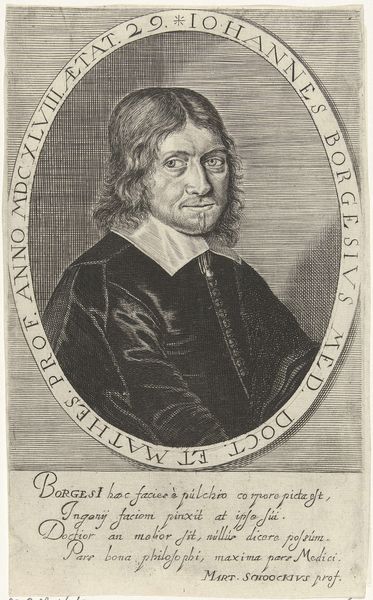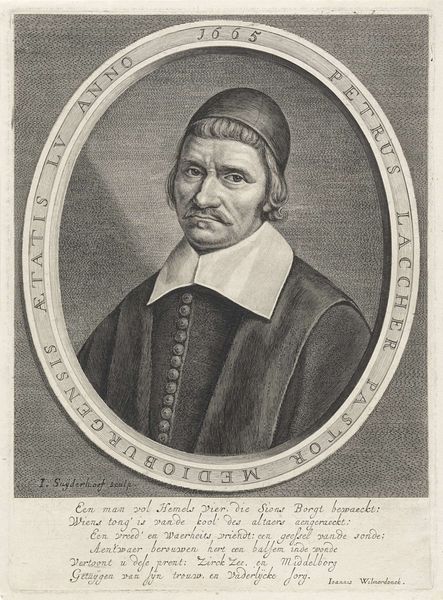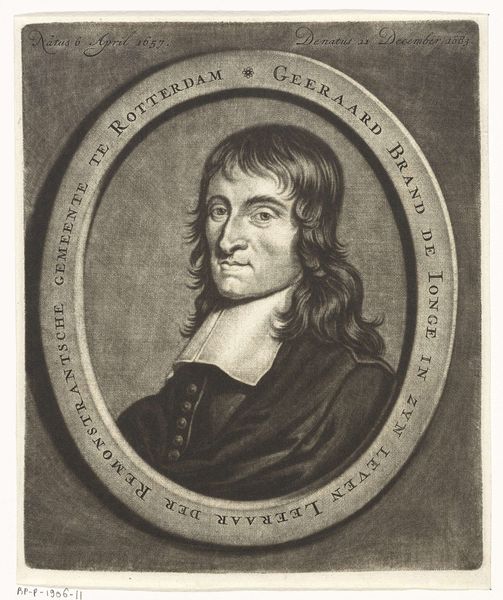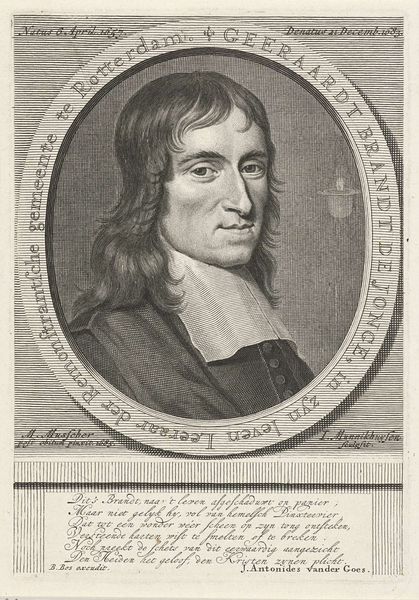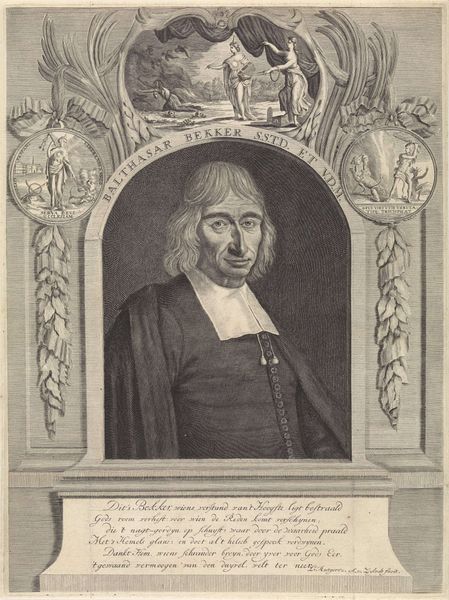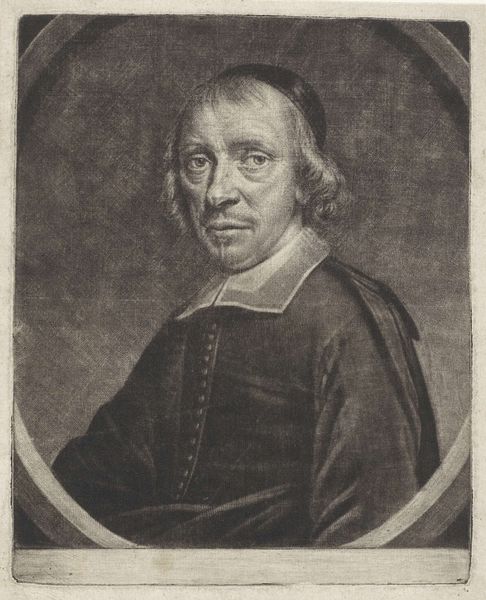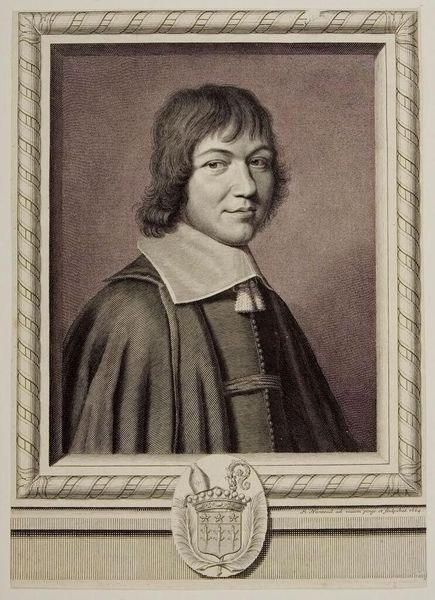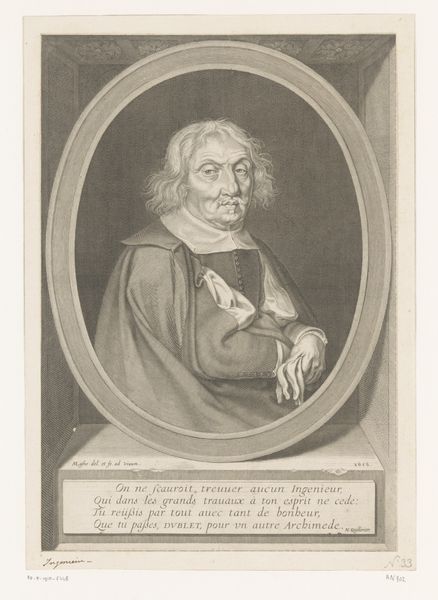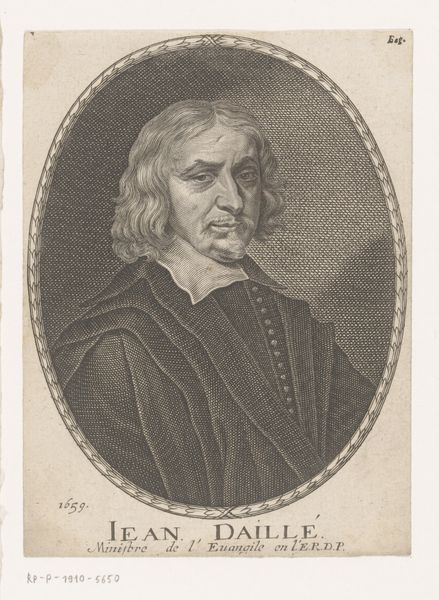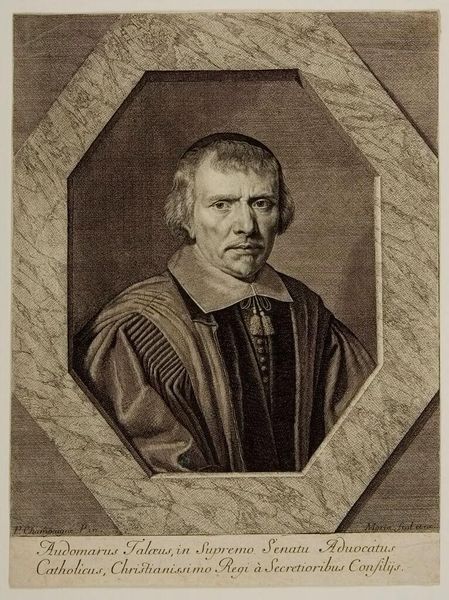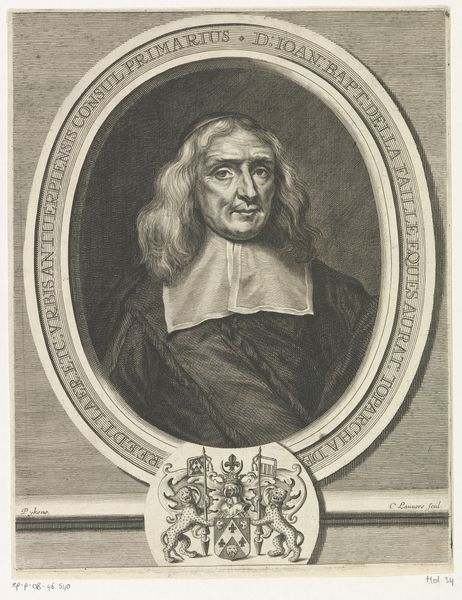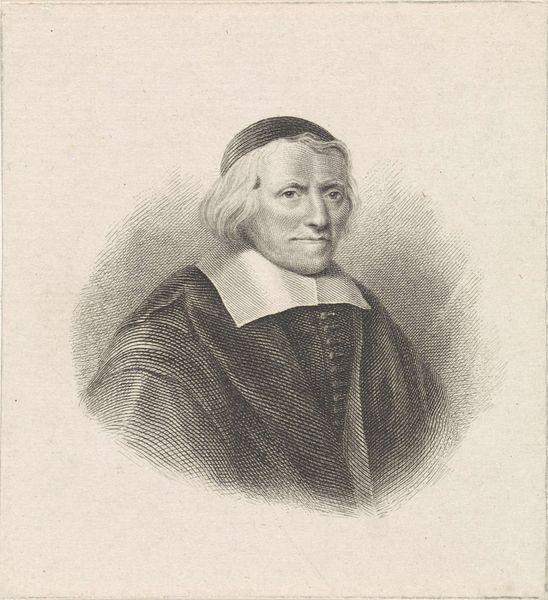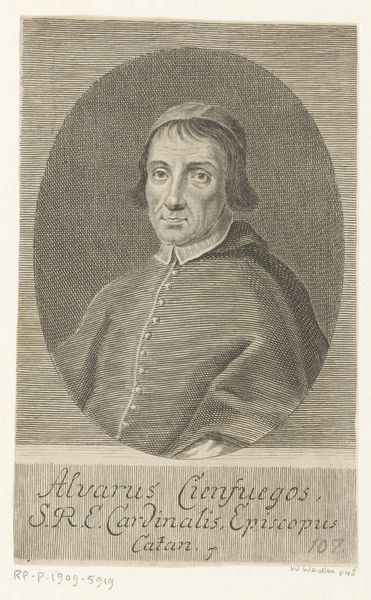
#
portrait
#
facial expression drawing
#
pencil sketch
#
charcoal drawing
#
portrait reference
#
pencil drawing
#
animal drawing portrait
#
portrait drawing
#
portrait art
#
fine art portrait
#
digital portrait
Dimensions: height 167 mm, width 133 mm
Copyright: Rijks Museum: Open Domain
Editor: We’re looking at “Portret van een man (Jan Luyken?) in ovaal,” created sometime between 1655 and 1705 by Michiel van Musscher. It's a monochrome portrait held by the Rijksmuseum. There's a quiet intensity to the subject's gaze. What can you tell me about it? Curator: This portrait offers a glimpse into the socio-political context of the Dutch Golden Age, even beyond its aesthetic value. Portraits at the time, particularly those displayed in ovals like this one, often served as signifiers of status and intellect, subtly reinforcing social hierarchies. Have you considered how the sitter’s dress might reflect their profession or social standing? Editor: The buttons, perhaps? Could this reflect his economic status? Curator: Precisely. But let’s also consider the institutional forces at play. The Rijksmuseum's acquisition and display of this portrait over time has shaped how the public understands both the subject and the artist. It reinforces certain narratives about Dutch history and identity, doesn't it? It becomes less about Jan Luyken specifically and more about broader cultural representation. What do you think that says about us, seeing it now? Editor: It suggests that we continuously re-evaluate the past, reshaping historical narratives according to contemporary values and interpretations. It makes me wonder about all the other unseen or disregarded portraits from the same period. Curator: A critical question! This single image encourages an investigation into who is remembered and why. And the museum’s role in it all. Editor: Thinking about the institutional forces framing the image and who has access to being seen shifts everything. I will consider this more in future! Curator: Wonderful! Every encounter with art is another chance to reflect on both past and present.
Comments
No comments
Be the first to comment and join the conversation on the ultimate creative platform.
